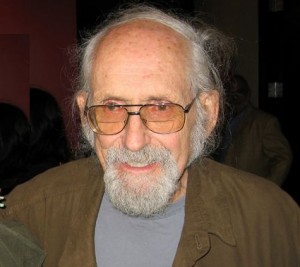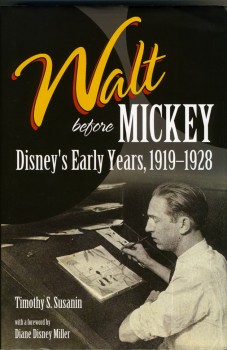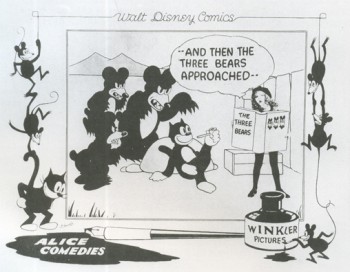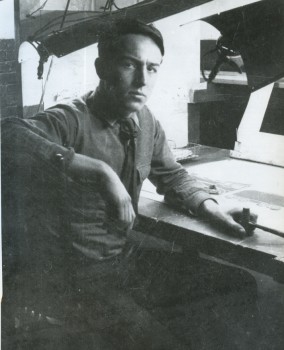Books &Disney 09 Aug 2011 06:44 am
Walt Before Mickey – a book report

- Before I write about the book, let me say that I am truly sad to hear of the death of Corny Cole, one of those great people you meet in the world of animation who seriously changes things for you. I thank Richard Williams for introducing me to him. I’ll try to post a number of his drawings later this week.
 - I’ve spent a lot of time in the past two weeks reading a thoroughly enjoyable and inspiring animation book, and I wholeheartedly recommend it to anyone interested in Walt Disney or animation. Walt Before Mickey: Disney’s Early Years 1919-1928 is by Timothy Susanin, and it’s such a real treat that I had a hard time putting down. Yet I wanted to keep it alive, so I brought a bunch of other books in for the ride. I took my time reading it even though taking my time was hard to do.
- I’ve spent a lot of time in the past two weeks reading a thoroughly enjoyable and inspiring animation book, and I wholeheartedly recommend it to anyone interested in Walt Disney or animation. Walt Before Mickey: Disney’s Early Years 1919-1928 is by Timothy Susanin, and it’s such a real treat that I had a hard time putting down. Yet I wanted to keep it alive, so I brought a bunch of other books in for the ride. I took my time reading it even though taking my time was hard to do.
The book tells in elaborate detail (and I do mean elaborate) all of the steps that Disney had taken to get started in this business. The boy who learned how animation could become much more than it was and fought with all the “jack” he had to put it all on the screen. He and Roy, partners in those early days, staked everything on their belief in what they were doing. It’s a great story and makes for something of a page turner.
In J.B. Kaufman and Russell Merritt‘s book, they open with an evaluation of the early period of Disney animation: ” . . . the first striking fact about Disney’s 1920′s films is that they take no particular direction: they don’t evolve, they accumulate.” How accurate an assessment of these films. They don’t get better, they get worse almost as though Disney soon tired of doing them. The gags become repetitive; the characters lose all sense of characterization; even the live-action “Alice” goes from having a large part in the films to flailing her arms so that we can cut back to the drawn animation. This is not the Disney we know from the Thirties & Forties – the one who pushed his people to create the Art form. Essentially, Kaufman and Merritt are looking for the “Art” and give a sharp report on their findings.
This isn’t true of Susanin. His book searches only for the facts and records. But then, let’s look at how the two books were constructed. Susanin’s interviews were limited in comparison to someone like Mike Barrier who did several hundred interviews to write Hollywood Cartoons. He helped Mr. Susanin with many an interview; he also got some help from Kaufman and numerous others in gathering the details and data for the book. Mr. Susanin said, “. . .the Library of Congress, the New York Public Library, MOMA, and the like. I visited the studio when work took me to Burbank, and the Walt Disney Family Museum construction site when work took me to San Francisco. Otherwise, it was lots of virtual work and lots of phone calls with librarians around the country! ”
 A lot of the source information came from authors who’d done their own books. Susanin gathered the material – and gathered A LOT OF MATERIAL.
A lot of the source information came from authors who’d done their own books. Susanin gathered the material – and gathered A LOT OF MATERIAL.
The accumulation of the facts is collected in an almost overwhelming fashion by Susanin. Every sentence in the book seems to have some source information backing it up. An almost minute-to-minute account of these early days is gathered and written about. Prior to this book, I found myself guessing at some of the material. I hadn’t really seen all the details until I had them laid out in this book. Add to that details upon details, and you’re breathless from the material presented. (Every person Disney meets seems to have their history displayed. And just read about the Laugh-O-Grams bankruptcy suit in the epilogue.)
Make no mistake about it, this is a period I am wholly and completely intrigued with. I’ve read every book and interview about it that I could find. Kaufman & Merritt’s Walt In Wonderland, Mike Barrier’s The Animated Man, Donald Crafton’s Before Mickey, even Canemaker’s Winsor McCay. I’ve read and read and read again through the material. Yet the way it’s ultimately presnted in this book is so involving. Perhaps it’s all those details I love reading.
 In the three week period Walt and Lillian spent in New York looking to sign a second contract to produce the Oswald animation for Universal, you see all the meetings he has taken. All the visits to Universal and Charlie Mintz (who actually contracts the job to Disney and ultimately steals a large part of his staff so that he can dump Disney) and to MGM (Fred Quimby – of all people) and Fox. He spends a lot of time with Jack Alicote the editor of Film Daily who counsels Walt on the business side of the business. You see all the connections; you understand the seriousness of Walt’s situation and you ride with him trying to grasp what straws he has left. It’s hypnotic in all its detail, and it serves as a tight climax in a well written book.
In the three week period Walt and Lillian spent in New York looking to sign a second contract to produce the Oswald animation for Universal, you see all the meetings he has taken. All the visits to Universal and Charlie Mintz (who actually contracts the job to Disney and ultimately steals a large part of his staff so that he can dump Disney) and to MGM (Fred Quimby – of all people) and Fox. He spends a lot of time with Jack Alicote the editor of Film Daily who counsels Walt on the business side of the business. You see all the connections; you understand the seriousness of Walt’s situation and you ride with him trying to grasp what straws he has left. It’s hypnotic in all its detail, and it serves as a tight climax in a well written book.
This segment takes Mr. Susanin 12 pages, full of details, yet it took Mr. Barrier fewer than 2 pages in The Animated Man and fewer in Hollywood Cartoons. It took Kaufman & Merritt in Walt In Wonderland just a bit more than 2 pages to get the information across. It’s not that I needed that additional information to grasp the dire situation Disney was in, it’s that I wanted it. Yet any strong quote in Barrier’s books or Kaufman & Merritt’s has ended up in Susanin’s. It seems that ANY detail that could be found was used to tell the story.
For a geek like me who can’t get enough of this, it’s great. But I wonder about the average reader.
My only real problem with the book is that I wanted the story to go on. At least through Steamboat Willie. Susanin gives a quick sketch of the rest of Disney’s career, but I wanted to get more about that two month period when Plane Crazy was in production. After all, the staff that would leave him – Hugh Harman, Max Maxwell, Mike Marcus, Ham Hamilton and Ray Abrams – stayed on to finish the Oswald pictures while Ubbe Iwerks worked with Les Clark and Johnny Cannon to draw the first Mickey film. A real disappointment set in for me when I came to that epilogue as Disney boarded the train home to start over again.
Yet even in that epilogue there are those delicious details. All of the books personae are laid out with short bios of where they went and when they died. Everyone from Hazel Sewell to Johnny Cannon to Les Clark to Rudy Ising. What a sense of detail. I can tell you I’ll use this book for information for a long time, and there’s not doubt I’ll read it a few more times. This is a wonderful book, and I encourage you to pick it up.
There are some fine interviews with Mr. Susanin on several sites:
- Didier Ghez talks with him on his Disney History site.
- On Imaginerding there’s a nice informal interview.
- Moving Image Archive News also has a review mixed with interview.

on 09 Aug 2011 at 9:27 am 1.Molly said …
I will pick this up. All those little details are what interest me, especially those entailing the road to the first real breakthrough to “success.”
Thanks for this.
on 09 Aug 2011 at 11:49 am 2.Charles Kenny said …
Thanks for posting your thoughts Michael. I have a copy of Walt in Wonderland on my bookshelf that I’ve been meaning to get to for the last 6 months. Perhaps now I’ll have some impetus to take it down and read it!
on 09 Aug 2011 at 12:54 pm 3.Bill said …
An +A book report, a book with this kind of enjoyable, densely written subject matter AND you don’t want it to end… Next stop, Amazon!
on 09 Aug 2011 at 12:58 pm 4.George Taylor said …
Michael,
Thanks for the link!
I started reading this on my way to the D23 Celebration of Walt Disney World’s 40th Anniversary in May. It was surreal to read the book in a WDW hotel!
It is a fascinating read, made even more fascinating by the fact that it presents a lot of detailed information.
I agree that I wanted Tim to write more.
on 09 Aug 2011 at 1:06 pm 5.The Gee said …
It does sound intriguing. I’m not that into needing to know about Disney, either the man or the studio. But, information about the business and the travails and risks are something which would probably pull me in.
Densely packed with focus on the individual players can add up to a better story. It doesn’t always need to be anecdotes as much as understanding that certain people played certain roles and were just around or involved that can allow for additional dot-connecting. Anyway, it sounds good.
(And, I don’t mean to bring this up in a way that seems inappropriate, but Tom Sito reminisces about Mr. Cole. http://tomsito.com/blog.php?post=2006
I didn’t know him personally so this is all I can write; I only know of him in various ways because of various people. He always sounds amazing. Bless him for that. He’s got a legacy.)
on 09 Aug 2011 at 5:50 pm 6.Mark Sonntag said …
As I’m trying to get my own project off the ground I relate to the Walt of this period. Odds stacked against you and so on. The early history of Disney, of animation and indeed film is fascinating. They really were flying by the seat of their pants. We forget that when we look at the corporate giant that exists today.
on 09 Aug 2011 at 9:55 pm 7.Michael said …
Mark, you hit the nail on the head for me. I rooted for Walt all the way with all the financial struggles, because it’s what I go through almost daily. It was an inspiration to see how driven and resourceful he was. It’s exactly what I most enjoyed about the book; I associated with the lead character.
on 09 Aug 2011 at 10:09 pm 8.Mark Sonntag said …
Mike you might like my most recent post, I won’t say anymore but it’s related.
on 09 Aug 2011 at 10:58 pm 9.Michael said …
Yes, I saw the photos a day or two back. I enjoyed them enormously. It’s wonderful when you get such a response that you didn’t expect. To hear from the Cowles family, almost out of the blue and to get so much more information out of them. That’s a treasure.
For those who don’t know what we’re talking about, take a look at Mark’s blog.
on 10 Aug 2011 at 12:31 pm 10.Eddie Fitzgerald said …
I like the comment about Disney’s earliest films not evolving but just accumulating. Of course they did evolve later on.
I wish modern 3D studios felt they were on a mission to evolve…I mean, in more than just technical ways. What this industry desperately needs now is to get better at comedic acting. I thought the Horton film that came out a few years ago made a start but nobody took it to the next level.
on 13 Aug 2011 at 5:02 pm 11.John Celestri said …
I feel a special connection to Walt Disney’s early years whenever I see a picture of Disney and/or members of his staff standing outside of the Kingswell Avenue storefront studio. One of these days, I’ll post a picture of our storefront studio on my blog…small town…Main Street.